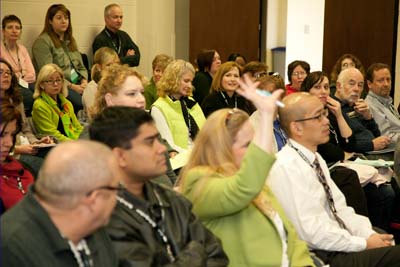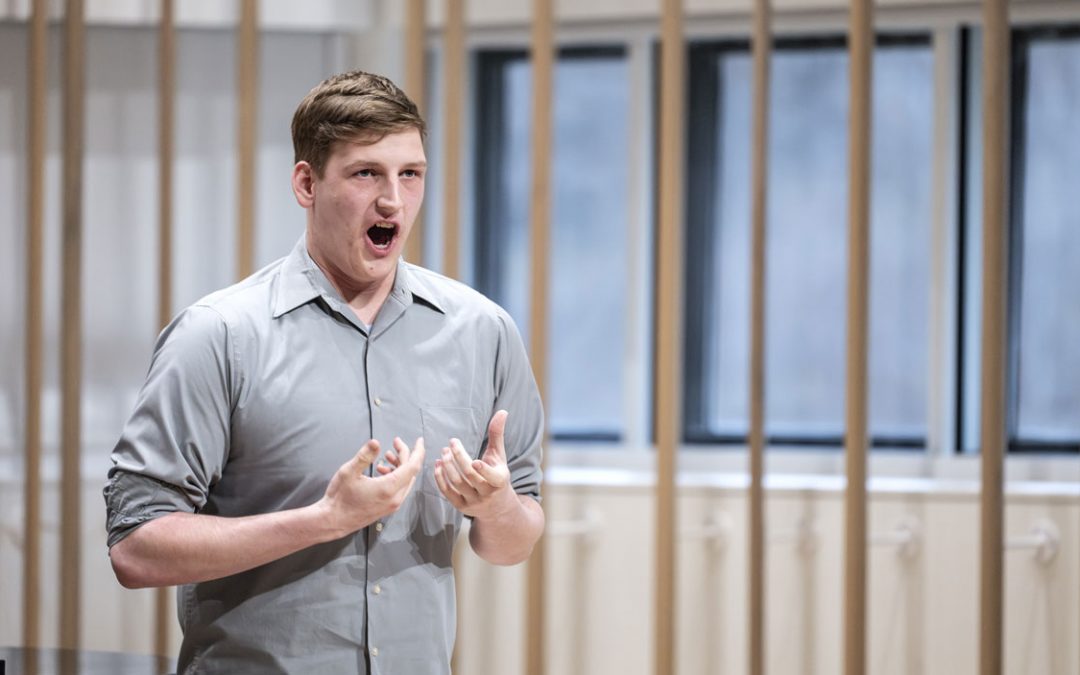
It was standing room only in several workshops at UMSL's Focus on Teaching and Technology conference last week. The 10th annual regional conference attracted 330 faculty members from 33 campuses.
Last week, faculty from all over the St. Louis region spent two days learning new ways of enhancing a centuries-old profession. The 10th annual Focus on Teaching and Technology Regional Conference attracted 330 faculty members from 33 campuses to the two-day event at the University of Missouri–St. Louis.
“The exchange of information is always exciting,” said Margaret Cohen, academic director of the Center for Teaching and Learning, organizers of the event. “This year’s keynote speaker offered participants a foundation for understanding how people learn. The workshop that followed conveyed the value of helping students acquire the metacognitive (learning how to learn) skills they need to be successful learners. More than one workshop and concurrent session also focused on this theme, helping faculty from different campuses tie the sessions together as they learned which technologies might support student learning.”
The nine pre-conference workshops held on Thursday in the Technology and Learning Center on South Campus highlighted effective ways to use a variety of software and hardware technologies in college classrooms and online. Vendors were selected to demonstrate innovations and connect participants with commercial partners to support their work on their home campuses
Michael Butler, senior research analyst in the College of Education, led about 30 faculty members and graduate students in some exercises on using the newest version of interactive SMART Boards. He pointed out that people in higher education “have not been active users of SMART Boards.”
Three representatives from Schiller’s Audio Visual, one of the sponsors of the conference, were on hand to demonstrate board’s bells and whistles.
“How many of you are currently using SMART boards?” asked Leslie Lincoln, an education consultant from Schiller’s. Not so long ago, there would have been a show of hands. On this day, the responses came from hand-held wireless devices called SMART Response XE. Instantly, a color chart on the board began recording the tally. Sure enough, 68 percent of the respondents replied, “No.”
Presenters offered 25 concurrent sessions on topics ranging from technology that supports discussions in class and online, to redesigning large enrollment courses by integrating creative technologies. It took 15 sponsors, nine partner universities and many volunteer hours to make it all happen.
Sifting through a stack of responses from conference goers, Cohen was pleased to see how enthusiastic the initial feedback was. About one-third of attendees were UMSL faculty members. Cohen and conference sponsors were pleased with the turnout and the positive response to the program.
“Each year, more colleagues from campuses across the bi-state region join us. Many volunteer to participate in future conference planning. This event strengthens higher education in the region and places UMSL on center stage. We’re thrilled to lead this initiative with Continuing Education and ITS, our campus partners,” Cohen said.














